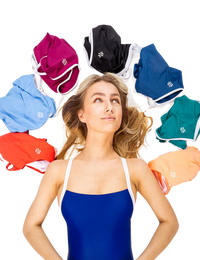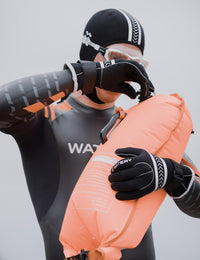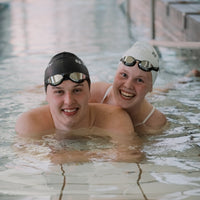What types of bathing suits are there?
There are a lot of different designs on swimsuits, and it can be a little difficult to see which ones belong to the different categories. Overall, it can be said that there are 7 different categories of swimsuits for women:
Competition swimsuits
Training swimsuits
Swimwear
Swimwear for pregnant women
Swimsuits with legs
Swimsuits with skirts
Swimsuits with frills
Others will probably also divide them into swimsuits with high/low leg cut and in relation to back cut, but there we would think that those types fit all 7 categories to varying extents.
Competition swimsuits are only relevant to those who practice swimming at the competitive and elite level, as these are highly specialized in their design and material composition, which makes them suitable for one thing only - competition. Should it still interest you. then you can find Denmark's best selection straight away here, as well as read about how you best fits for your competition suit.
The same can be said about training swimsuits, but these are after all more generally applicable, but we'll come back to that, so let's go through the different categories instead.
Swimwear
Although the name probably mostly suggests that swimming suits are for swimming in and bathing suits for swimming in, the situation is actually the other way around. A swimsuit is often much looser in fabric and therefore not as tight-fitting. It could, for example, be this from Jolyn, which has a high leg cut and a crossback back (We'll probably get into that further down). Therefore, a swimsuit is also best for a beach holiday, a relaxing trip to the beach and play and fun in the swimming pool.
But before we get too categorical, it must be said that today there is not much difference between a swimsuit and a bathing suit. Actually will some of the models fall under both categories. Therefore, you can also easily use a swimsuit for training, as long as the back cut is hydrodynamic.
Swimwear for pregnant women
Being pregnant is associated with a life-affirming and happy time, but it also has its challenges. Because as the belly grows, the clothes will start to tighten - and this also applies to bathing suits. So what do you do then? Because it doesn't make sense to have 4 swimsuits in different sizes that will only fit for 2 months. Therefore, swimsuits for pregnant women are a brilliant solution.
They are designed with an extra layer of elastic fabric along the side panels of the stomach region, which will expand in step with the stomach, without it being tight or uncomfortable. In addition, they also have padded cups to lift and support the bust as it also grows. Last but not least, you can choose whether it must have 2 straps, that gathers on the back or you would rather have someone with you halterneck. The advantage of the latter is that it can spare and relieve the back, but it requires that the neck can withstand it.
Swimsuits with legs
Legged bathing suits were some of the first designs to see the light of day in the 1800s. Today, this design has a very special meaning for competitive swimmers, as most competition suits have long legs for increased hydrodynamics. But! Of course, there is also ordinary swimsuits with legs, where they cover the hip region and down to the top of the thighs.
Often the choice of this type of bathing suit has more to do with personal comfort. For some, it's about covering more of the body around the hip region, while others like to use them as training swimsuits, since different models may resemble competition swimsuits. If you are in doubt as to which one suits you best, you can read more about the various test winners right away here.
Swimsuits with skirts
In order to remain in the same considerations regarding body shape and fullness as you find with swimsuits with legs, we have swimsuits with skirts. They are also called bathing suits, where their similarity is mostly to be found in ordinary minidresses, but they can also be described as swimsuits with legs and a skirt.
The advantage of this type of bathing suit is that they discreetly and elegantly hide the stomach and hip region. Some of the models even has a longitudinal seam just above the waist, which gives a more hourglass shape despite the loose fabric around the stomach.
In addition, there are they also with padded bowls, which support the bust and together with the design of the bathing suit, they highlight female forms in the best way.
Swimsuits with frills
Swimsuits with frills have been in fashion ever since the 1800s, when in their expression they wanted to separate the male from the female bathing suits. That's why frills were introduced to make them more feminine - and why change something that has always worked?
That's why swimsuits with frills also come in many different designs, but the most popular is frills along a V-neckline. It just gives that extra something, so that the femininity can really shine.



















